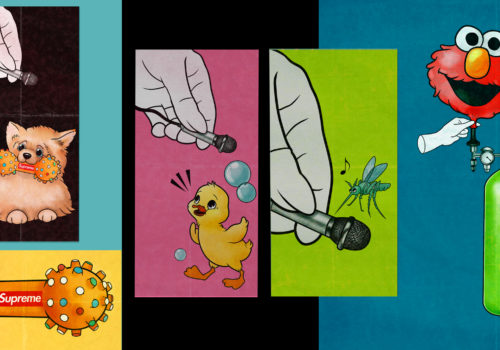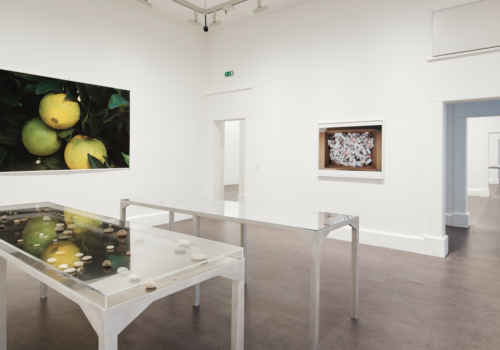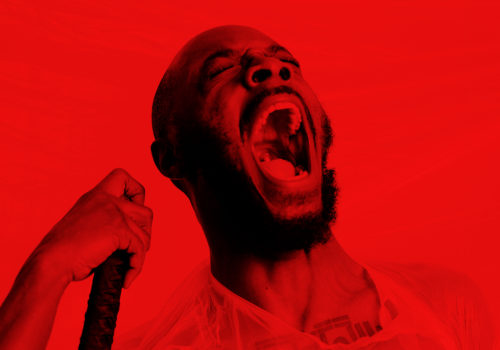Ireland’s Top 10 Modernist Designs
Words: Matt Retallick & Dylan Murphy
Image: Harp Beer Mat from 1960 via @modernist.ie
March is dedicating to triumph over adversity at District. We’re celebrating the people continuing to exceed expectations despite enduring the most difficult year of our lives. Matt Retallick AKA Modernist.ie highlights the amazing Irish modernist art that is in danger of being forgotten and he’s shared his top designs of all time.
Educated Instagram accounts are democratising a lot of niche art and culture that was previously inaccessible for a host of reasons. One of our favourite curators on social media is Matt Retallick AKA Modernist.ie.
Back in April 2019, Matt started his Instagram page dedicated to sharing some of the most unique and beautiful pieces of Irish design, architecture and culture from he modernist era.
In part, his research was inspired by a desire to unearth the forward-facing work that is often left out of Ireland’s cultural history books. Nothing is off the cards on his page and he’s shared everything from cigarette packets to tower blocks and political posters.
It’s a welcome breath of fresh air in the midst of google search results that present celtic crosses that frequent city centre gift shops.
Though a tough ask, we invited Matt to choose ten of his favourite Irish modernist designs with a few words breaking down what makes them so appealing and oh boy, did he come through with the goods.
P&T Logo by Damian Harrington
Designed in 1969 by Damian Harrington, the Posts and Telegraphs logo does everything modernist design should do. It’s simple, impactful and clever. I like that after all these years it still has the ability to surprise. Have you ever noticed the hidden plus symbol before? If not, look again.
After Work Guinness – Richard Eckersley
The After Work Guinness poster is by Richard Eckersley in 1961. This is probably my favourite Guinness poster of all time. Notice how the man’s head is the same shape as the pint. Eckersley really captured the sense of bliss you get clutching onto a creamy pint of plain after a hard day’s work. No wonder he’s smiling.
Rosc ’77 Catalogue
Rosc was a series of art exhibitions held in Dublin. Founded by architect Michael Scott, the exhibitions took place roughly every four years, and this catalogue cover designed by Patrick Scott is simply great. Clean lines, that well-chosen colour palette, and the font is a wonderful collision of ancient and modern.
Ireland’s Decimal Coins – decimalisation booklet
This is a booklet issued on 14th February 1971 to mark decimalisation. It’s understated, but there’s a lot going on here. Firstly, the split circle in black and white, round like a coin, but also denoting two halves – both sides of a coin, but also the old and new. The background shimmers like Irish gold, and the sans serif font is authoritative, clean, and seems to therefore usher in a new age.
You Don’t Have to be Irish to Love Ireland – campaign by Herb Lubalin in ‘77
You Don’t Have to be Irish to Love Ireland. This 1977 campaign for the Irish Tourist Board is by American graphic designer Herb Lubalin. It’s the shamrock which steals the show here – it would have been so easy to go with green, but instead the choice is black and white, totally recognisable Irish iconography.
Berkeley Library, Trinity College by Paul Koralek in 1967
If I had to pick one building that encapsulates all that is stunning about Irish modernism, I would have to pick the Berkeley Library at Trinity College Dublin. In particular its truly Brutalist interior. In recent years ‘brutalism’ has become a shorthand for architecture that is brutal looking; it lends itself well to photography, with endless brutalist appreciation accounts on social media, but this oversaturation of brutalism has skewed what it actually is. The brutal in brutalism isn’t about architecture appearing harsh or severe, it is instead taken from the French for raw concrete, Béton brut. It describes concrete that is left with a natural finish, showing the traces of its making. Spare economy, all the better for not over-finishing. Berkeley Library is surely the finest example of Brutalism in Ireland?
Learner’s English Irish Dictionary, 1958
When I posted this on Instagram, it brought back hideous memories for many. It has however been one of the most popular and most talked about designs I’ve posted. It’s from 1958, something which shocked many people. Afterall, this predates artistic movements like Op Art and Pop Art, it’s years ahead of the curve.
Dublin Bus Logo
If you listen to the wonderful Three Castles Burning podcast, you may have heard me talking about this logo already. It’s everything a good logo should be, so every day that you probably don’t give it a second thought, but it is an extremely clever design. Based on a 13th century seal, it was first used on a bus route to Dún Laoghaire. It’s of course a castle, a lowercase D and B, for Dublin Bus, and at the time it also apparently matched the shape of the bus route. Like so many logos designed in-house, I have no idea who is responsible, but whoever they are, hats off to them!
Aer Lingus Logo
This Aer Lingus shamrock is another of my favourite Irish logos. Designed by Arthur King in 1974, it’s a truly iconic piece of Irish Design Modernism. It speaks for itself really, it’s just stunning. Of course, as it was used on the livery of planes, it’s a piece of Irish modernism that went global.
Ulysses cover design by Ernst Reichl in 1934 (Random House)
I’m interested in how designers based outside Ireland interpret Irishness. You will see many examples on my Instagram feed, and this is one of them. I love this cover design by Ernst Reichl for a 1934 edition of Ulysses by James Joyce. The way the title makes use of the whole cover, with those slender elongated letters and curves, and how Joyce’s name nestles between the E and S.
Follow Modernist on Instagram here and subscribe to his Patreon here.







